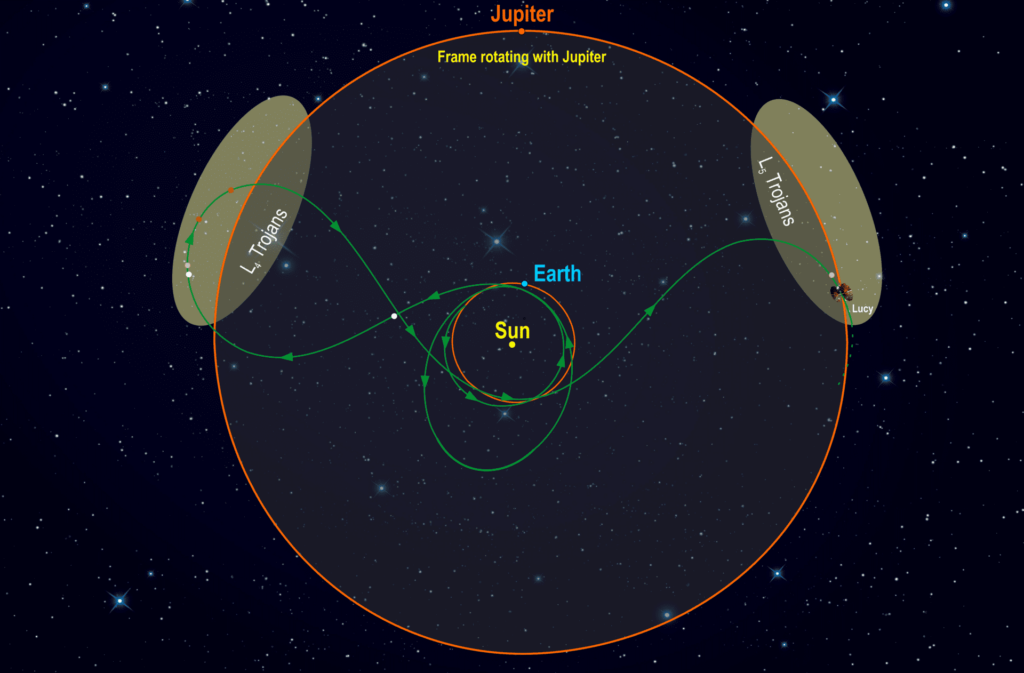The leadership of the Lucy mission has approved an operation plan for the full disclosure of the probe’s unlatched solar array. Its implementation is scheduled for May.
Tasks and technical problems of the Lucy mission
The Lucy spacecraft was launched in October last year. It is designed to study Trojan asteroids in Jovian orbit. This is how astronomers call two large groups of asteroids that are constantly located in the vicinity of the Lagrange points L₄ and L₅ of the Sun-Jupiter system. The mission plan is scheduled for 12 years, during which Lucy will have to visit at least 8 small bodies.

Lucy receives energy from two round solar arrays with a diameter of 7.3 m with a total surface area of over 80 m². During the launch, they were in a folded state, their deployment began after the probe went into space and was carried out according to the fan principle.
Unfortunately, during the opening, one of the panels could not snap. During the subsequent investigation, NASA engineers determined that it turned only 345°. The cause of the failure was the loss of tension in one of the cables of the panel opening mechanism. According to engineers, from 50 to 100 cm of the cable remained unstrung.
It should be noted that even with incomplete disclosure, Lucy solar arrays generate over 90% of the planned energy level. This is enough to fulfill all the objectives of the mission. The main concerns of engineers are related to the fact that an unlatched panel may affect the structural stability of the probe during upcoming maneuvers using the main engine. Therefore, they developed a plan to disclose the problematic segment. After studying the proposal, the mission management agreed to its implementation.
Second attempt to open Lucy solar arrays
Lucy solar arrays are equipped with two motors (main and reserve) for pulling cables. Mission engineers plan to use this “redundancy” and activate both engines simultaneously to create a stronger torque. Ground tests have shown that this may be enough to pull the cable to the remaining distance required to fix the solar array.

The first stage of the operation is approximately scheduled for May 9. In its course, engineers plan to pull out most of the remaining cable in the coil. Then they will evaluate the results and, if successful, continue the deployment until the array is fully fixed. The second stage of the operation will begin a month after the first, that gives engineers enough time to analyze the data and make the necessary changes.
According to https://phys.org

